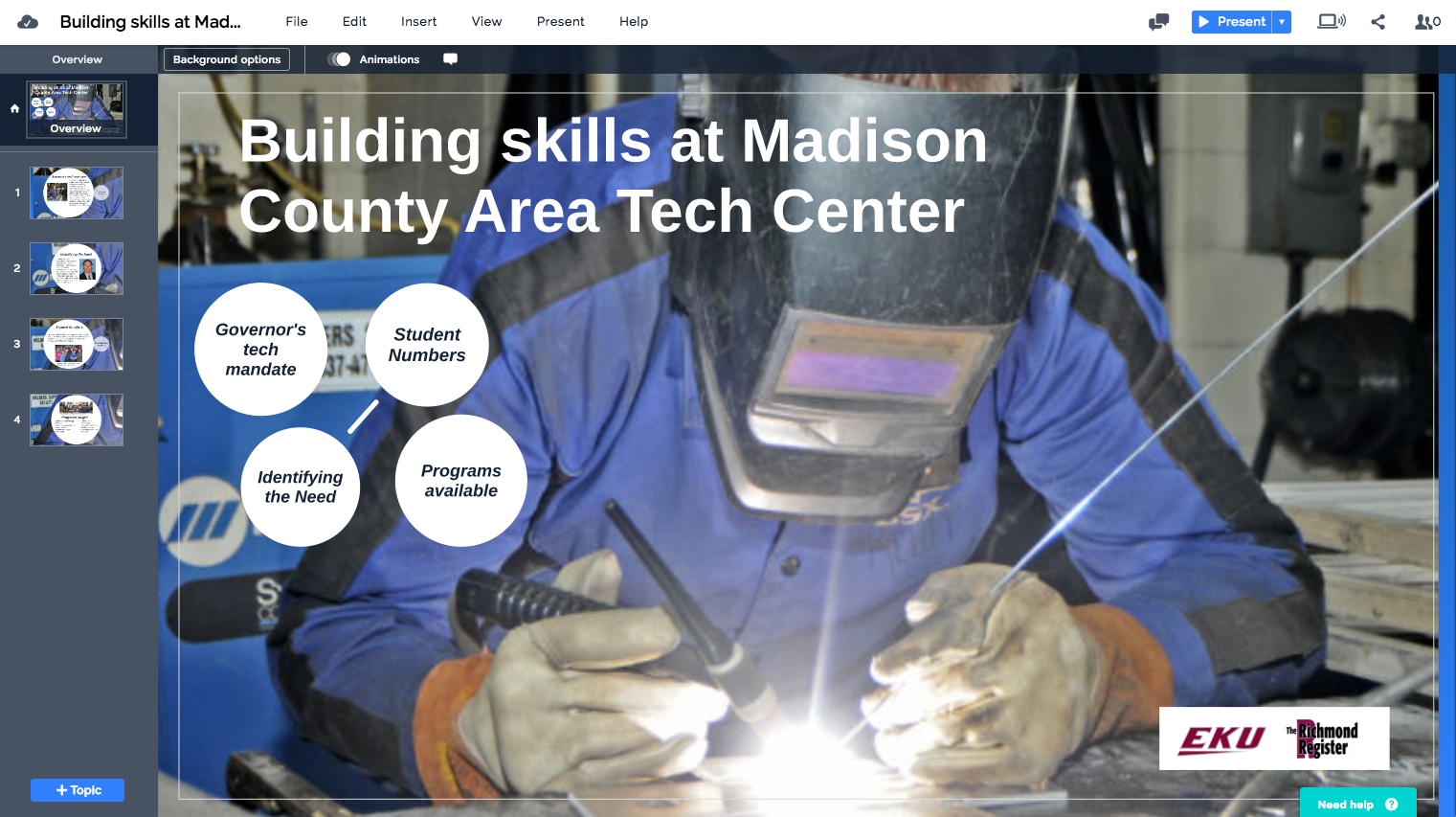Students at Eastern Kentucky University needed inexpensive ways to create interactive media both for class and for the community news organization where they intern. I wanted something free-to-cheap that would include a range of images, text and video.
The solution? Prezi.
I am already a big fan of Prezi for the classroom. Students enjoy the non-linear zooming interactivity that gets away from bullet points, and they like focus on visual rather than text. The Prezi below explains our process.
At EKU, the Multimedia News program partners with our community newspaper, The Richmond Register. Together, we developed a series of stories comparing the four school district’s in the Register’s circulation area. Students created news stories and infographics based on their reporting. We put those pieces together in a Prezi, like the one below.
Students used Infogram, Piktochart and Canva to create interactive graphics for the Prezi. Using Prezi helped students break down their stories into different components, forcing them to consider new ways of presenting information.* The results were exactly what we wanted for interactive media, and the student newspaper staff is looking at incorporating Prezi multimedia projects for the fall.
*This story has been updated with additional student learning outcomes.
Dr. Ginny Whitehouse is a professor of journalism in Eastern Kentucky University’s Multimedia News program. She is the Cases & Commentaries editor for the Journal of Mass Media Ethics and serves on the journal’s editorial board.

